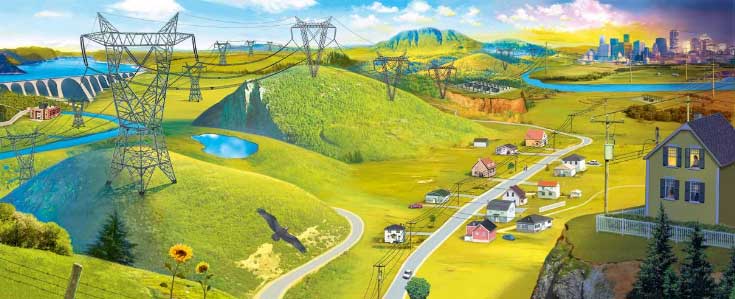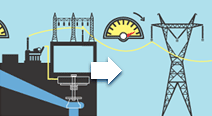From the Power Station to the Home
Inside a generating station, turbines use the driving force of water to set electrons in motion and generate alternating current.
Electricity from the power station has a long way to go before reaching your home.
1 – The voltage of the current produced by a generating station can reach 13,800 volts, like at the Robert-Bourassa generating facility.
2 – Thanks to the voltage step-up transformer located in the generating station’s switchyard, the electricity is transmitted at much higher voltages, from 44,000 to 765,000 volts.
3 – Once in the transmission system, electricity from each generating station is combined with electricity produced elsewhere.
4 – The electricity passes through cables which are suspended from towers. These towers are arranged in a series from the generating stations to source substations–which lower the voltage–and then reach the satellite substations, which further reduce the voltage.
5 – Leaving the satellite substations, electricity travels through underground lines. At some distance from the substations, the distribution system goes from undergound to overhead, and transformers attached to poles lower the voltage one last time. Inside our homes, we use either 120 volts to power our televisions, radios and other regular electrical appliances, or 240 volts for the appliances that require a strong current like the dryer or stove.
6 – Electricity is consumed as soon as it is produced. It is transmitted at a very high speed, close to the speed of light (300,000 km/s).

Use the scroll bar below to see electricity's path from the power station to your home.
Alternative content
 Electricity's path from the power station to your home
Electricity's path from the power station to your home Put together a power system!
Put together a power system!
